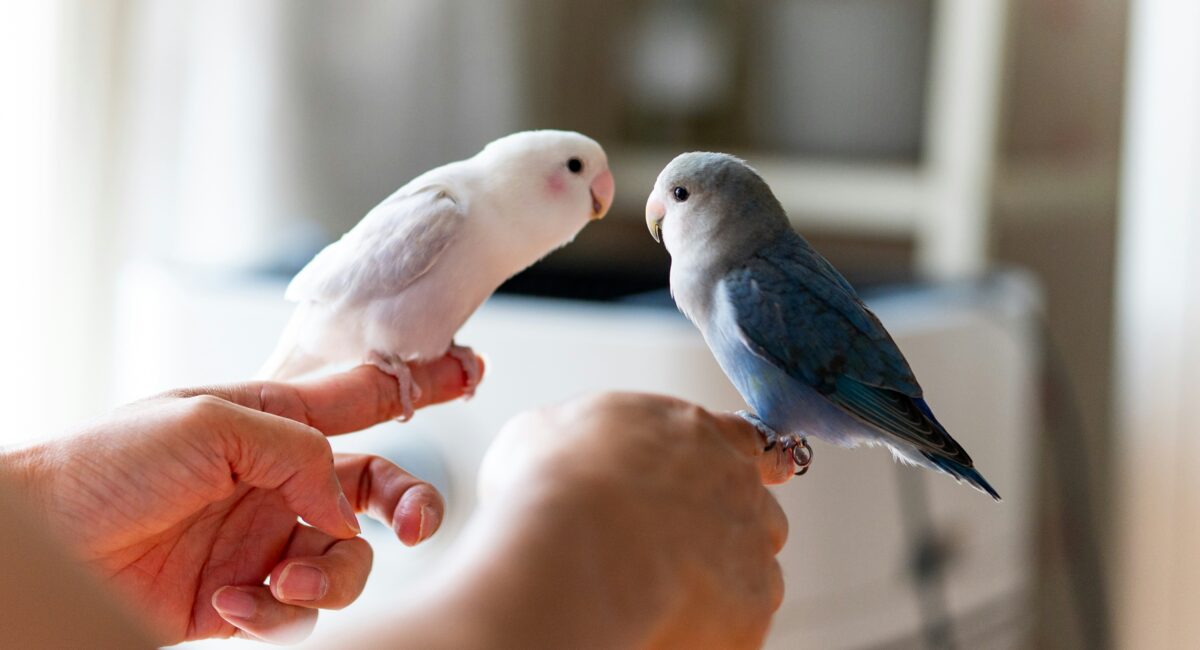The Best Ways to Encourage Your Parrots to Talk
I don’t know if you have ever experienced a parrot that can mimic human speech. They are one of the most intelligent and social birds. But remember, not all parrots have the ability to mimic human speech. Sometimes you may have to encourage them to master this special ability. So let’s get started on what are the best ways to encourage your parrots to talk.
Choosing the Right Parrot for Talking
As I said, not all parrots have the same capacity to talk. My favorite and first recommendation is the African Grey parrot. Read my African Grey profile to understand more about them. They can have a conversation with any human and have the ability to form a sentence. There are a few more on my list too, such as Amazon parrots, Indian Ringneck parrots, Macaws, and Budgerigars. However, even within these species, individual parrots differ in their aptitude for speech. When selecting a parrot for its talking abilities, do your research, know their ability, and match it with yours.
Understanding Parrot Learning Behaviors
We can compare them with our children; like how our children learn. We always create an environment for our children to learn languages. For the parrots, we do the same by creating an environment where they can learn. Repetition and consistency are the keys; the more they hear a word or a phrase, the more likely it is to replicate it. We have to understand that this learning process is gradual and requires patience.
Creating a Positive Learning Environment
Here is the challenging part. Creating a stress-free environment is important for any learning process. Parrots are known for being very sensitive to their surroundings, and we have to provide a calm and positive atmosphere to encourage them. Thinking about how to build it? I’m going to share step by step process and help you to create an environment & training tips where your parrot feels secure and focused.
Building Trust with Your Parrot
Before any training building trust is important, which can create a strong bond between the parrot and its owner. It helps them to feel safe and secure in their environment. Some parrots exhibit negative behavior such as biting, screaming, and feather plucking, which comes from stress. Trust me, when a parrot trusts you all the stress will be gone.
To be honest, parrots are more likely to mimic the words when they are comfortable with their owner. Building trust not only helps them with training but also helps their mental stimulation and makes them happier.
Timing and Frequency of Training Sessions
Lots of us may wonder why our parrots aren’t learning to talk. But the success depends on when and how often you train them. Timing is important. I would say morning and late afternoon parrots become more active, and this is the ideal time for training. Try to make a short session like 10 – 15 minutes. Longer sessions of training may affect your parrots negatively.
Using Repetition and Consistency in Training
Many of us make mistakes with this part which is consistently repeating words and phrases. This helps to reinforce the sounds in your parrot’s memory. It’s also important to be consistent in how you say the words. Try to use the same tone, pitch, and context. So that your parrot can better associate the sound with the desired meaning.
Interactive Techniques for Encouraging Speech
You also can use the interactive technique to encourage your parrot to talk. It makes learning fun and effective. Here are some effective methods you may apply:
- Talk During Play: When you are playing with parrots, you may use some simple phrases such as “good bird”, or “you’re so cute”.
- Toy Interaction: Use some talking toy that repeats the words. Some parrots enjoy mimicking the sounds from these toys and may learn some new words.
- Clicker Training: This is a very effective and positive outcome. When your parrot attempts to say a word, click and reward them immediately.
- Use Excitement and Emotion: Engage with excitement and use tones when talking. Parrots tend to learn words and expressions when they are spoken with passion and emotion.
- Acknowledge Attempts: When your parrot says a word or makes a sound make sure to respond by repeating the word and giving them some praise or a treat.
- Pair with Talking Parrot: If you already have another parrot that speaks. Let them spend time together and encourage your new parrot to speak.
- Sing Together: Try to sing simple songs or nursery rhymes to your parrot. The rhythm and melody can make it easier for your parrot.
The Role of Positive Reinforcement
Any kind of training, positive reinforcement is a must-have and powerful tool for parrots. To motivate your parrots use some treats, petting, or verbal praise. You have to reward them immediately after they attempt to mimic your speech. Treating their favorite foods is the best way to encourage them rather than petting and verbal praise.
Using Visual and Auditory Aids
This method is even more fun but doesn’t apply to all parrots. African Grays are the perfect birds for this type of training. Amazon parrots are also able to train this type of training. But for some other birds visual cues may enhance the learning process. For example, showing your parrot an apple while saying the word “apple” can help it associate the word with an object. Some parrots are able to identify the colors. African grays can identify over 100 objects and they are known for having higher IQs among parrots.
Encouraging Social Interaction
As we all know parrots are social birds and social interaction plays a significant role in their development. If your parrot regularly interacts with other humans they are more likely to pick up on speech. Some parrots are very friendly with kids and if you have kids in your house, they can learn to mimic your kid’s speech. So, involving your family members in the training process reinforces the learning.
Common Challenges
If you have a shy friend then you might know what am I going to talk about. Some parrots can be very shy or fearful, which can inhibit their ability to learn. In that case, we have to be very gentle with them. Another common challenge you might face, is they randomly pick unwanted sounds. I know a Cockatoo who picks all the bad words and continues to use them. If you have any other pets such as dogs or cats, the possibility of picking their sounds is so high. Addressing these challenges requires a mix of patience, redirection, and sometimes, a bit of humor.


